Permitted Development Guide
It’s important to know what specific permitted development rights you have when building or renovating a property. Discover all you need to know in our permitted development rights guide, whether you’re adding an extension or a front porch.
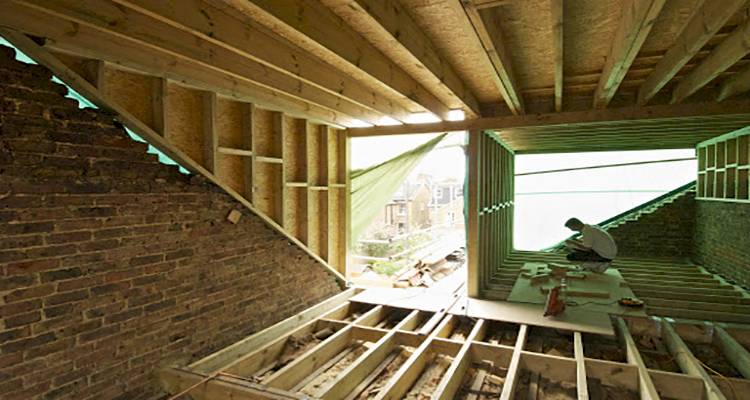
Table of Contents
- What is Permitted Development?
- What Are My Permitted Development Rights?
- What are the Different Types of Permitted Development Rights?
- What is a Lawful Development Certificate?
- What Renovations Can I Make Within Permitted Development?
- What are the Permitted Development Rules?
- Recent Changes to Permitted Development Rights
- Conclusion
- FAQs
- Sources
What is Permitted Development?
The following guide explores a range of topics surrounding permitted development. In this article, we will discuss what permitted development is, what permitted development rights are, and the different types of permitted development rights among other relevant topics.
Our guide will prove helpful if you plan to have changes made to a building that you own or/and occupy. Anyone who wishes to have changes made to a building such as their house should know their permitted development rights.
For this section, we will explain what permitted development is. Permitted development rights (PDRs) are your rights to alter a building or to install a new structure or make other structural changes within a building’s perimeter where planning permission is unnecessary.
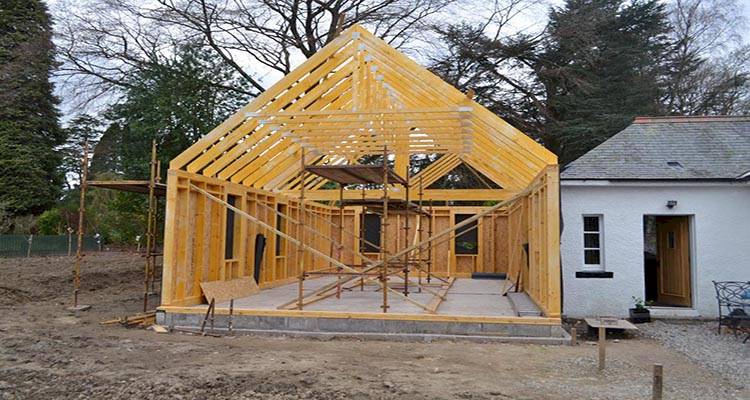
The most recent version of permitted development rights was introduced to the UK in 2015 in the form of the latest General Permitted Development Order (GPDO), which was updated 5 years ago from the original 1995 version. Some changes were also introduced to the GPDO in 2019.
Permitted development rights are granted by parliament and generally, overrule the interest of your local county council although there are some exceptions such as if the council issues an article 4 direction.
The benefits of permitted development rights include that they will allow you to make changes to your house or another property without requiring planning permission, in many cases, they will make it easy to install a new driveway or outbuilding for example, and they can save you money.
What Are My Permitted Development Rights?
We will now explore who does and doesn’t have permitted development rights, how you can check what your permitted development rights are, based on where you live and what type of dwellings lack permitted development rights. Most property owners will have their full permitted development rights.
Most single-storey extensions or conservatories fall under permitted development as do most loft conversions and porches although in each of these cases there are exceptions. However, PDRs can be more limited in cases such as for listed buildings.
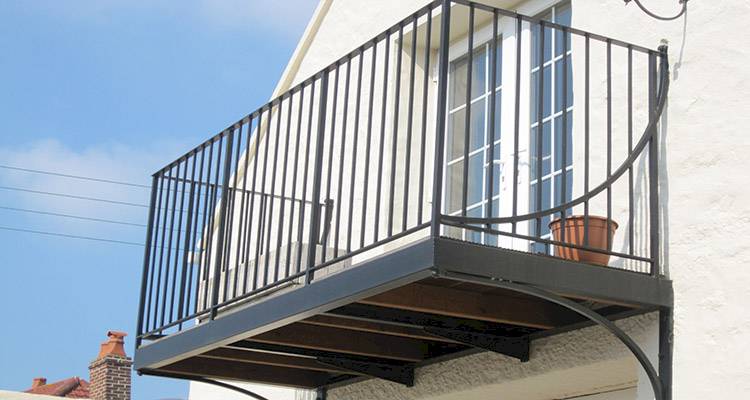
Balconies, verandas and raised platforms among other construction projects are not protected by these rights. Information regarding the types of areas where PDRs may not apply or may be limited can be found through government resources.
The Planning Portal permitted development sections also provide appropriate information. For information regarding permitted development in Wales, go to gov.wales.
Locations where PDRs may be limited or removed entirely include the broads and national parks. Houses, flats or maisonettes in multiple occupancy also lack these rights as do properties which have had their PDRs removed.
What are the Different Types of Permitted Development Rights?
In this section, we will discuss the various types of PDRs. For each of the following subsections, we will explain what each class of permitted development rights are when they apply, who would use/need them and what their guidelines are.
It should be noted that any of the following PDR classes are not applicable if permission to use a dwelling is only given through Class M, N, P, PA or Q of Part 3 of the GPDO schedule.
Class A Permitted Development Rights
Class A PDRs cover property extensions. More specifically, it covers alterations, improvements or enlargements to a house. It would be used in cases of having a side or rear extension constructed or having new windows or/and doors installed.
If you plan to have an extension added to your house or any other general alteration or improvement undertaken, then this class of PDRs will likely apply to you.
Under class A PDRs, you are allowed to have a one storey side extension built that is no larger than half the size of your existing dwelling in width. A one storey back extension is allowed so long as it is no longer than four metres for a detached dwelling or three metres for semi-detached or terraced dwellings.
In some cases, you will be allowed to have a two-storey rear extension constructed once it is no longer than three metres. An additional legal change that was introduced in May 2019 establishes that larger one storey back extensions are allowed of up to eight metres for most dwellings and six metres in length for semi-detached or terraced dwellings although prior notification is required in the form of a Lawful Development Certificate.
Class B Permitted Development Rights
Class B relates to alterations or additions to a roof such that they enlarge a dwelling. An example of when Class B PDRs would prove applicable is if a loft conversion was constructed with which dormer windows are used.
Class B PDRs would apply to anyone who plans to alter or add to their roof, assuming that such plans do not exceed the limits set by Class B’s guidelines.
The dwelling cannot end up higher than the tallest part of the existing roof as a result of any work undertaken; otherwise, Class B PDRs will not apply. When measuring the height of the existing roof, you should not consider the height of any protrusions such as firewalls, parapet walls or the chimney.
To avoid planning permission being necessitated, it’s important that any materials utilised for exterior work have a similar look to those present on the exterior of the property as a whole.
With the exception of an enlargement that connects the original roof to an extension’s roof or when it comes to a hip-to-gable enlargement, the original roof eaves must be reinstated or ideally maintained.
Secondly and once more with the aforementioned exceptions, the enlargement that is located closest to the eaves of the previous roof’s edges must be at most 1/5th of a metre from the eaves.
This needs to be measured along the slope of the roof from the eaves’ outside edge. With the exception of an enlargement that connects the original roof to the roof of an extension, no section of enlargement can reach out beyond the external wall’s outside face as it was originally.
Class C Permitted Development Rights
Class C PDRs cover other roof alterations that do not involve enlargement. An example of such an alteration is work to install roof windows or/and lights. Anyone seeking to have such an alteration can use their Class C PDRs once the work is within Class C’s guidelines. Under your class C PDRs, the alteration cannot protrude greater than 0.15m beyond the plane of the original roof’s slope.
This is as measured from the perpendicular with the original roof’s exterior surface. Work would also not be permitted without planning permission if it would cause the tallest part of the alteration to be higher than the tallest part of the previous roof or if it consists of or comes with the installation, replacement or alteration of a flue, chimney or soil and vent pipe.
Another limitation to your Class C PDRs is in the case of installing, altering or replacing solar thermal equipment or solar photovoltaics.
Class D Permitted Development Rights
Class D covers the installation of a porch. This assumes a case where the porch is erected beyond the exterior door of the house. If you plan to have a new porch fitted, Class D PDRs will probably apply to you, assuming that its installation meets the guidelines for Class D.
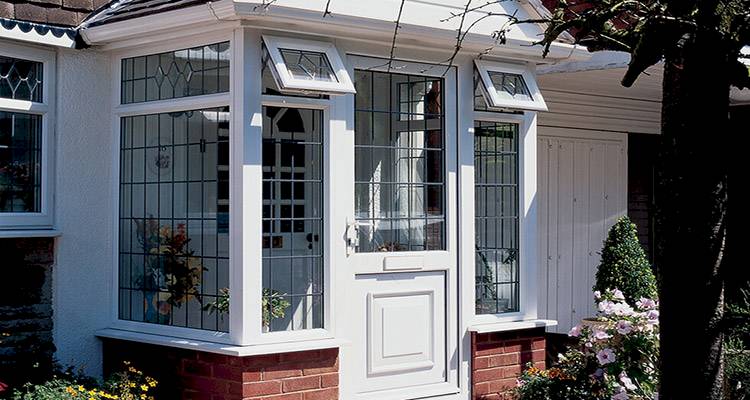
In order to have a porch installed without needing planning permission, the structure’s ground area cannot exceed 3m2, and no part of the structure can stand 3 metres higher than the ground.
Also, if there is a highway outside the dwelling, no part of the structure can be within 2 metres of the edge of the curtilage of the dwelling. The ground area should be externally measured.
Class E Permitted Development Rights
Class E PDRs cover various installations and changes relevant to a house that are within the house’s curtilage and which are used for leisure/enjoyment purposes. Class E PDRs may be used if you wish to have maintenance performed on an outdoor swimming pool or to have a container installed that stores oil or liquid gas for the purpose of heating your home.
They might also be used if you wish to have decking or a garden shed installed. Class E does not cover buildings that are attached to the dwelling. Anyone seeking to have changes made or installations added within their home’s curtilage that are relevant to the enjoyment of their house could use these PDRs.
Class E PDRs will not apply if the total land area of the new installations covers more than half of the total area of the house’s curtilage without including the area that the house itself covers.
They would also not apply if any installation is fixed on land ahead of a wall which acts as the primary/original dwelling’s principal elevation.
To avoid planning permission being necessary, Class E instalments cannot be more than one storey high, and their height must be no greater than 4 metres if they have a dual-pitched roof, 2.5 metres if they are within 2 metres of the edge of the dwelling’s curtilage or 3 metres in any other situation.
The structure’s eaves height cannot stand greater than 2.5 metres. They also cannot be installed within the curtilage of a listed building or between the edge of the dwelling’s curtilage and a wall that forms the side elevation of the primary dwelling.
You cannot have a container constructed that has a capacity of more than 3500 litres unless you obtain planning permission.
Class E PDRs also do not cover the installation of a balcony, raised platform, veranda, a dwelling or microwave antenna or if you wish to have work completed on land that is located in the broads, a national park, a region classified as having outstanding natural beauty or in a world heritage site.
Class F Permitted Development Rights
This class of permitted development rights covers the installation of hard surfaces within a house’s curtilage. Class F PDRs would be used in cases of having a hard surface laid down or replaced (either entirely or partly) within your dwelling’s curtilage so long as the surface is appropriate to the enjoyment of the dwelling.
A person seeking to have a new patio installed or a landscaping redesign of their garden undertaken in which a hard surface is installed could use their Class F PDRs. To avoid planning permission, the hard surface should consist of porous materials. If not, any run-off water from a hard surface must be able to run from the hard surface to a porous area inside the perimeter of your dwelling’s curtilage.
Class G Permitted Development Rights
Class G PDRs relate to installations such as flues and chimneys. Class G PDRs would be used in cases where a soil and vent pipe, flue or chimney is being replaced, altered or installed on a dwelling.
If you wish to have any of these changes or installations implemented, you can use your Class G PDRs to avoid planning permission being required once the work sticks within the guidelines.
Class G PDRs will not apply if the height of the instalment will stand 1+ metre above the roof’s highest point or if the dwelling is on article 2(3) land which stands beside a highway or forms the side elevation or primary elevation of your dwelling.
The latter two restrictions as applicable to a dwelling on article 2(3) land also apply in cases of an instalment that is fitted on a roof slope or wall.
Class H Permitted Development Rights
Class H covers microwave antennas. Class H PDRs would be used in cases where a satellite dish is being altered, replaced or installed on a dwelling or within a dwelling’s curtilage.
You would need to employ your Class H PDRs if you wish to have a satellite dish instalment, replacement or alteration job undertaken and so long as it complies with Class H guidelines.
To stick within your Class H PDRs, you cannot have work undertaken within your dwelling’s curtilage or on the dwelling itself that would lead to 3 or more antennas, at least one antenna that is more than 1 metre long, 2 antennas that fail to meet the correct size criteria, an antenna that is fixed to a chimney with a length of more than 0.6 metres, an antenna fixed to a chimney whereby the antenna sticks out over the chimney or an antenna that has a cubic capacity greater than 35l.
Further, to avoid planning permission being necessitated, the antenna cannot be installed on a roof lacking a chimney if the tallest part of the antenna stands above the tallest part of the roof.
If a chimney is present, the tallest part of the antenna cannot stand above the tallest part of the chimney or 0.6 metres in height as measured from the highest part of the roof’s ridge tiles.
If located on article 2(3) land, an antenna cannot be fixed on a wall, roof slope or chimney which faces toward and can be seen from a highway. If located in the broads, an antenna cannot be fixed on a roof slope, chimney or wall which faces towards and which can be seen from a waterway.
Finally, an antenna also cannot be fixed to a building that is taller than 15 metres or planning permission will be required.
An antenna should be fitted in a way as to minimise how much it alters the exterior appearance of your dwelling and when no longer in use or needed, it should be removed as soon as is practical to do so. When it comes to measuring the antenna’s length, you should not include any reinforcing rim, brackets, mounting or project feed element in your total.
Class Q Permitted Development Rights
Class Q PDRs relate to installations, alterations or replacements of structures on a building or within its curtilage that is related to the purpose of an agricultural building or for a building used under Class C3. Class Q also covers building conversions in relation to the same buildings mentioned previously.
Class Q PDRs do not apply if anything within the curtilage of the property is not used for agricultural purposes as an aspect of an established agricultural unit if on or before March 20th, 2013 or if the dwelling was used prior to March 20th, 2013 but was not being used on that day, when it was last used or if the site that came into use after the aforementioned date for a timeframe of at least one decade prior to the date development began under Class Q.
These PDRs also do not apply if the total floor space of the dwelling or dwellings which under Class Q are changing their use and that are for agricultural purposes is greater than 450m2. The total number of separate dwellings developed in this area under Class Q cannot be greater than 3.
The site cannot be occupied for purposes of agricultural tenancy unless both the tenant and landlord have expressed their consent. They also do not apply if it is less than a year prior to the date development commences, a tenancy for agricultural purposes has been brought to an end or if such a termination was for reasons of carrying out Class Q work.
Both the tenant and landlord must agree in writing that the site is no longer needed for agricultural purposes or Class A(a) or Class B(a) development as part of Part 6 of the GPDO cannot be undertaken since March 20th, 2013 or if development commences after March 20th, 2023 during the decade timeframe that is allowed following from the date development work begins under Class Q.
The work cannot see the building’s external dimensions go beyond the existing building’s dimensions at any point in particular. The work if under Class Q cannot cause the dwelling or dwellings to have a floor space greater than 450m2 if the use falls within Class C3 of the schedule if the work under Class Q(b) includes work other than the replacement or instalment of doors, roofs, water, drainage, electricity, windows, exterior walls or gas or other services.
Work may be allowed if there is partial demolition work undertaken to the point that is reasonable and necessary for the functioning of the dwelling. You will need planning permission if the location is on article 2(3) designated land, the location is or creates part of a safety hazard area, a site of special scientific interest, an area containing a scheduled monument, a military explosives area for storage purposes or the dwelling is a listed building.
Further conditions to Class Q PDRs are that in cases of work under Class Q(a) and Class Q(b), said work is allowed so long as prior to development, the developer has contacted the local planning authority to apply so as to find out if prior notification of the authority is necessary.
Such prior notification may apply to where there are risks of contamination or flooding to the site transport, and highways affect the development or if noise affects the work.
It also applies where the location of the dwelling makes it otherwise impossible or at least undesired for the dwelling to be changed from one for agricultural purposes to that which is used as a Class C3 house and the building’s external aesthetic or design and prior approval’s provisions of this part applies and is related to said application.
If work is planned only under Class Q(a), work is allowed so long as before work; the developer applies to the local planning authority to know if prior notification will be necessary or not based on the information discussed in sub-paragraphs 1(a) to (e) and prior approval’s provisions of this element apply in a way that relates to such an application.
Work relating to Class Q is allowed under Class Q(a) and Class Q(b) if it is complete within 3 years of the work’s initial date of approval.
Prior Notification
Prior notification applies in cases where you will need to contact the council to utilise your permitted development rights. They may confirm that planning permission is not required, but in some cases, it will prove necessary.
Prior approval is used in cases of particularly large extensions to a dwelling, the demolition of a dwelling, developments related to electronic communications networks or developments related to forestry or agriculture.
Prior notification would be necessary, for example, if you wish to have a dwelling on article 2(4) land extended or altered assuming that it is situated in an agricultural unit greater than 0.4 hectares but less than 5 hectares or if you want to have any form of electronic communication technology installed, replaced or altered.
Anyone seeking to have work completed that requires prior approval will need to contact the Local Planning Authority. An application process cannot be undertaken after the work has been complete. In most cases, there is a £96 charge for making such an application although there are some exceptions to this rule.
Planning Portal provides precise details regarding how to notify the authorities for having a building demolished, the replacement, instalment or alteration of an electronic communication apparatus, large dwelling extensions or developments relevant to forestry or agriculture.
Commercial Buildings
Separate permitted development rights for commercial buildings also exist. Broadly, these PDRs apply to warehouse and industrial buildings. These PDRs apply in cases of having new commercial buildings constructed or for having a pre-existing commercial building altered or extended.
If you plan to have one or more of the aforementioned work types undertaken and assuming your plans fit within commercial building PDR guidelines, then these PDRs will apply to you.
To avoid planning permission proving necessary, any new commercial building cannot be taller than five metres if located within 10 metres of the edge of the premises’ curtilage and it must not have a total floor space greater than 100m2 if situated in an area of special scientific interest or if on designated land. In most cases, the floor space limit is 200m2.
If the building is not within 10 metres of the edge of the premises’ curtilage, it cannot be taller than 15 metres or taller than the tallest building within the curtilage boundary if said building is less than 15 metres in height.
Another limit to your commercial buildings PDRs is if alterations or extensions that result in a building becoming taller by five metres in height occur within 10 metres of the curtilage edge.
In any other scenario, alterations or extensions cannot end up taller than the original building. To avoid planning permission, on designated land, the total floor space of an extension or alteration cannot surpass 500m2 or 110% of the initial construction, whichever option of the two is lowest. In a location of special scientific interest, the limit rises to 125% of the original structure or 1000m2.
Once again, it will be the lower of the two options which applies. This same rule applies in any other scenario whereby the limit options are 150% of the initial structure or 1000m2.
To stick within your PDRs, no developments can be located within five metres of the curtilage edge or in any part of a listed building’s curtilage.
Commercial building PDRs also do not apply to work if the materials used lack a comparable appearance to the exterior of any existing warehouse or building within the perimeter. These PDRs do not apply if the work in question would limit the space that is free for vehicles to turn or park, if the work does not relate to the initial building, its staff or for research and development related to the company located in the building.
Such PDRs do not apply if any altered, extended or new buildings are for staff-related purposes but are being used between 19.00 and 6.30 for non-employed individuals or if significant quantities of any hazardous substances are being used/stored.
What is a Lawful Development Certificate?
We will now explain what a lawful development certificate (LDC) is. An LDC is acquired after the authorities have confirmed that a building’s existence is legal.
An LDC is not generally mandatory, but it is granted to you if you wish to contact the authorities to confirm that any work you wish to have undertaken or work that has previously been completed is within your permitted development rights.
A person may need one in situations to prove that your building is legal for reasons of planning control. Having an LDC can simplify any legal matters such as with the council that relates to a premise that you own or/and occupy.

LDCs are used to confirm that a building as it is, is legal or/and that work relating to said building is lawful. You can apply for a lawful development certificate through your local county council. The website Planning Portal provides a service to apply for an LDC from any local authority in England.
To apply for an LDC for a building that is in current operation or use so long as it is legal not to comply with limitations or conditions, will set you back £234 while if the operation or use is planned, it will be half the price as for a full application.
The cost of a full application will depend on the size of the building. The full application price will apply for most cases of a building that is in current operation or use.
What Renovations Can I Make Within Permitted Development?
There are various renovations that can be made that fall within permitted development. Most single-storey extensions, some two-storey extensions and most garage, greenhouse and shed installations will fit within permitted development. You can find full guidelines regarding renovations through Planning Portal.
What are the Permitted Development Rules?
For this section, we will break down the various permitted development rules for different types of structures such as outbuildings and garages. Full details regarding permitted development for different types of structures can be found here.
Permitted Development Rules for Loft Conversions
Loft conversion work is considered permitted development if the volume of the loft is 40m³ in the case of a terraced house or 50m³ for a detached or semi-detached house. To avoid planning permission being necessitated, the extension cannot go beyond the plane of the current roof slope that exists on the primary elevation if it faces out toward a highway.
An extension cannot be taller than the tallest part of your dwelling’s roof. The materials must also have a similar look to the existing dwelling. You cannot have a balcony, veranda or raised platform installed as part of a loft conversion under permitted development
To avoid planning permission being necessary, any side-facing windows must be obscure-glazed, and if they have an opening, it must be 1.7 metres atop of the floor, no roof extensions are allowed in designated areas, and any roof extensions outside of designated areas with the exclusion of hip to gable extensions must be located as far back as is feasibly possible.
They must also be at least 0.2 metres from the existing eaves. To stay within your PDRs, roof enlargement is not allowed to overhang the exterior wall face of the original dwelling.
Permitted Development Rules for Extensions
Permitted development rules for extensions apply only to houses. A permitted development extension is not possible if the house in question is located in a region where an article 4 direction, planning condition or another type of restriction applies which minimises or entirely removes your PDRs.
For any type of house extension, only half the land area surrounding the existing dwelling may be covered by different buildings or/and extensions. The extension may not be taller than the tallest element of the original roof or taller at the eaves than the original eaves.
If the extension is positioned at any point within 2m of the area boundary, the height as measured at the eaves may not be taller than 3 metres. If a house is by a highway, the extension cannot be constructed at the top of the dwelling’s side elevation or in other cases it cannot be positioned in front of the dwelling’s principal elevation.
Further permitted development rules for extensions are that any work may not include raised platforms, verandas or balconies, a microwave antenna, soil and vent pipe, chimney, flue or an alteration to the existing dwelling’s roof. If the house is located on article 2(3) designated territory, to stick within your PDRs, there cannot be any cladding work done on the exterior.
The materials employed for any exterior work should not have a different aesthetic to any used on the house’s original exterior. If the extension extends beyond the house’s original side elevation, to avoid planning permission being required, it may not exceed a height of greater than four metres, it must only be a single-storey extension, and it can have a width of up to but no greater than the original dwelling.
When it comes to one storey extensions located at the rear of the house, they cannot extend further than the rear wall of the original dwelling by a distance that exceeds four metres for a detached house or three metres for another house type.
A one storey extension on the rear of a dwelling goes up to 8 metres with a detached house and 6 metres for any other type of house when it is subject to approval before work commences and is not located on article 2(3) designated land or an area of special scientific interest.
Approval is granted through an appropriate local planning authority. These types of extensions are also limited to a height of four metres. If an extension is greater than a single storey instalment, it cannot go beyond the original dwelling’s rear back by a distance greater than 3 metres or within 7 metres of the boundary that is opposite another house’s rear wall.
The extension’s roof pitch has to copy the existing dwelling as much as is practically possible. Upstairs windows that are situated in the dwelling’s side elevation have to be obscure-glazed and must be non-opening with the exception of if the part that opens is at least 1.7 metres from the floor.
Any side extension that is greater than a single storey will need planning permission. Any rear extension on article 2(3) designated land will also require planning permission.
Permitted Development Rules for Outbuildings
To avail of permitted development for outbuildings, it cannot be located on land ahead of a wall that forms a dwelling’s principal elevation. The structure must be single-storey with its eave’s height no greater than 2.5 metres, with an overall height no greater than 4 metres if it has a dual pitched roof or 3 metres in any other case.
If the structure is within 2 metres of the dwelling’s curtilage boundary, the height can be no greater than 2.5 metres. At most, half of the land area surrounding the original dwelling can be covered by new structures/additions.
If situated in the broads, an area classed as having outstanding natural beauty, a world heritage site or a national park, any outbuilding with a distance greater than 20 metres from the dwelling can be no larger than 10m2.
If situated on designated land, any outbuildings that you plan to have installed at the side of the dwelling will need planning permission. To obtain outbuilding permitted development, it cannot be within a listed building’s curtilage, otherwise planning permission will prove necessary.
Permitted Development Rules for Driveways
The permitted development rules for driveways also apply to patios. Assuming that your driveway proposal will use porous surfacing, you will not require planning permission. Porous or permeable surfacing will help to drain rainwater.
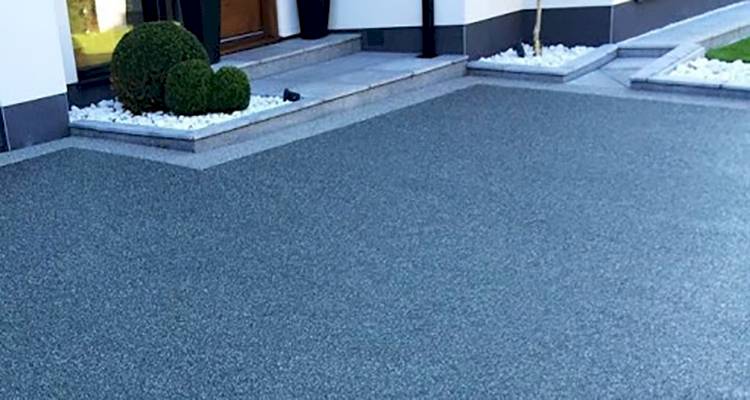
However, any new access into your garden that crosses over a footpath will require planning permission. The purpose of this is to ensure that any underground services are protected. There are also additional specific rules if you intend to have an electric vehicle charging point installed with your driveway.
Permitted Development Rules for Balconies
Generally, balconies are not considered permitted development. However, Juliet balconies can be an exception to this rule. In order to avoid planning permission with this style of balcony, no external access or platform can be installed with it, and the Juliet balcony can be no greater than 300mm, it cannot be situated on a dwelling’s roof or on an outbuilding that is within your house’s curtilage.
To avoid planning permission, your balcony cannot be situated between a road and the principal elevation of your home. It cannot cover more than half of the total curtilage area of your dwelling, which excludes the area covered by the original dwelling. It cannot be located within the curtilage of a listed building nor to the side of a dwelling if in an area classed as having outstanding natural beauty or in an area of conservation.
Permitted Development Rules for Barn Conversions
You cannot have a new barn converted without planning permission. The rules for existing barn conversions are that the location where the conversion took place must be used only for agricultural purposes and the barn must have existed before March 20th, 2013.
The barn conversion must have a total floor space no greater than 465m2. It is possible to break up this maximum floor space into five distinct dwellings. In the case of agricultural tenancy, the landowner will need the explicit consent of the tenants.
Permitted Development Rules for Garages
Generally, your PDRs will cover the creation of any garage, assuming that the garage is created internally and the dwelling itself is not enlarged. To convert a garage into a second house may require planning permission. In this case, you should contact your local planning authority to verify whether planning permission is needed.
Other cases that will limit or remove your PDRs are if you are located in a new housing area or an area of conservation. It is best to contact your local planning authority, either way, to ensure that planning permission is not necessary. Listed building consent may be required if the garage is to be installed within a listed building’s curtilage.
Permitted Development Rules for Porches
The permitted development rules for porches are that the porch ground floor area as measured from the outside can be no greater than 3m2. Further, no part of the porch can be higher than three metres above surface level, and no porch part can be within 2 metres of the dwelling’s curtilage if by a highway.
Recent Changes to Permitted Development Rights
For this section, we will break down the various recent changes that were implemented regarding permitted development rights. We will explain what these changes were when they were made and other topics such as who these changes affect.
The new changes allow different buildings greater floor space for converting their business to office use than before, allow takeaways to convert to residential use and increase the accessibility of businesses to become flexible use without the need for planning permission.
These changes also made rear dwelling extension rights permanent. These changes were introduced on May 25th, 2019. They affect converting service facilities to offices, converting a takeaway to a residential use building and dwelling rear extensions.
In terms of businesses embracing flexible use, they may convert their building so that it can also facilitate a specific community use, namely an art gallery, health centre/clinic, exhibition hall, public library or museum. This applies to specific businesses.
These changes impact on anyone with a building for Class A1, A2, A3, A5, B1, D1 or D2 use. They also affect betting offices, payday loan shops, householders, shops, hot food takeaways, launderettes and financial and professional services. More details regarding changes to PDRs can be found through the website First Plan.
Conclusion
As our guide has shown, there are various permitted development rights for specific work and various rules that need to be followed to avoid planning permission being necessary.
Now that you know your PDRs, you will be well equipped to have changes made to your home or within its curtilage while knowing whether or not you need planning permission. Your PDRs can make life easier and save you money and time.
FAQs
What size extension can you build under permitted development?
What does removal of permitted development rights mean?
How long does permitted development last?
What is the difference between permitted and granted development?
Where can I find my permitted development rights?
When were permitted development rights introduced?
Can I build a porch without planning permission?
Sources
http://www.parliament.uk/business/publications/research/briefing-papers/SN00485.pdf
http://www.legislation.gov.uk/uksi/1995/418/contents/made
https://www.lbhf.gov.uk/planning/planning-applications/permitted-development-rights
https://www.planningportal.co.uk/info/200130/common_projects/44/patio_and_driveway
https://www.hastings.gov.uk/planning/need/balcony_decking/








